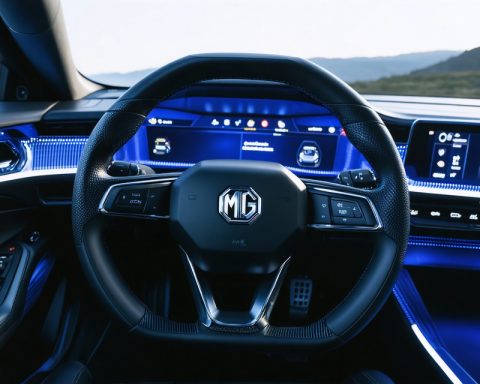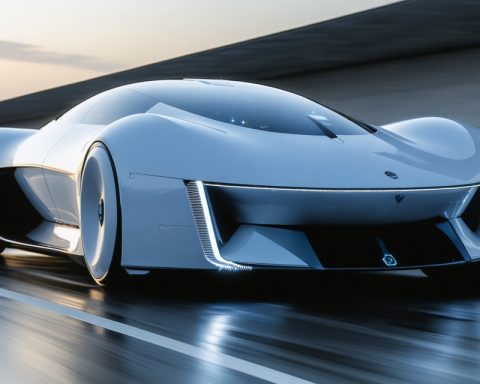- Tesla, BYD, Li Auto, and Series Group are the only EV manufacturers with a positive operating margin in 2024, highlighting their financial robustness.
- Tesla leads with a 7.2% operating margin, but BYD is closing in at 6.4% due to its successful vertical integration strategy.
- Vertical integration, emphasized by controlling all production aspects internally, boosts efficiency and cost-effectiveness for companies like Tesla, BYD, Li Auto, and Series Group.
- Emerging Chinese startups such as Zeekr show potential progress toward profitability, while others like Nio, Polestar, and Rivian struggle with significant losses.
- Lucid’s -374% margin underscores its dependency on external investments rather than market success for survival.
- As competition and pricing pressures rise, the EV landscape is poised for transformation, where integration and adaptability will dictate future success.
Amidst the electric hum of a rapidly expanding EV marketplace, the harsh reality of financial challenge looms over many players. As sales volumes surge, profitability remains a formidable hurdle for numerous manufacturers striving to paint the world green. However, standing atop the rubble of fiscal trials are four luminaries of the EV sector: Tesla, BYD, Li Auto, and a lesser-known Series Group from China, who alone managed to post a positive operating margin in 2024.
Tesla continues to set the pace with a commendable 7.2% operating margin, yet its position has not been indomitable. In stark contrast to Tesla’s dipping margins, BYD, the Chinese powerhouse, trails closely with an upward trajectory at 6.4%, suggesting a potential to overtake Tesla as the world’s most profitable EV-only marque. The momentum behind BYD is buoyed by a shrewd strategy of vertical integration, a cornerstone that champions control over every cog of production—batteries, drivetrains, and software—within its own ecosystem.
This blueprint of vertical integration finds favor not just with Tesla and BYD, but also extends its profitable branches to other players like Li Auto and Series Group. Such strategy allows these manufacturers to trim costs and bolster operational efficiencies, distinguishing the industry’s forerunners from its stragglers.
In a landscape cluttered with ambitious Chinese EV startups, some are fiercely clawing their way towards profitability. Zeekr, Geely’s premium tentacle, shows promise with a margin significantly improved from previous setbacks. Meanwhile, Xpeng and Leapmotor are hard at work chiseling down their operational losses, showcasing a potential turnaround. Yet, for some, the fiscal dawn remains a distant horizon; Nio, Polestar, and Rivian linger on the precipice of profound losses, in stark contrast to the rising Chinese titans.
Lucid, an icon of unyielding ambition, records an eye-opening -374% operating margin. Though this represents progress from earlier staggering losses, the brand’s survival rests not on market success but on the deep pockets of Saudi sovereign investments, providing a cushion against the free market forces that threaten more vulnerable startups.
While Tesla remains the sole non-Chinese beacon of financial stability in the EV universe, it faces a turbulent road ahead. As competition heats up and price skirmishes chip away at profit margins, the landscape of electric vehicles teeters on the brink of transformation. In an industry driven by innovation and scale, those who master the art of integration and adaptability may well steer the future of electric mobility.
Key Takeaway: As the battle for supremacy in the electric vehicle market intensifies, vertical integration emerges as a key determinant of profitability, giving well-integrated companies a crucial competitive edge. The race is far from over, and while Tesla and BYD presently lead, their position is under constant threat from agile competitors driven to innovate and capture more market share.
Electric Vehicle Market: The Profitability Puzzle and Emerging Leaders
The Electric Vehicle Market: Profitability Challenges and Emerging Leaders
The electric vehicle (EV) sector is booming, with sales volumes seeing a swift ascension. However, many manufacturers still grapple with achieving profitability. So, who are the game-changers in this challenging landscape? The shining stars are Tesla, BYD, Li Auto, and China’s Series Group, all of which posted a positive operating margin in 2024. Let’s delve deeper into these industry leaders and the factors contributing to their success.
Breaking Down the Leaders’ Strategies
Tesla: The Pioneer
Tesla has long been a titan in the EV sector, with an impressive 7.2% operating margin in 2024. However, as competition grows and operational costs rise, Tesla faces pressures that have caused its margins to dip over time. Despite this, Tesla’s innovation in autonomous driving technology and expansion into energy solutions sustains its market presence.
BYD’s Ascent through Vertical Integration
BYD is rapidly closing in on Tesla, with a 6.4% operating margin. This climb is largely due to its robust commitment to vertical integration—controlling every aspect of production, from batteries to vehicle software. This approach not only reduces costs but also ensures high product quality and speed to market.
Li Auto and Series Group: Stealthy Climbers
Li Auto and Series Group have also embraced vertical integration, which has proven instrumental in their positive operating margins. Their strategic focus on electric SUVs and hybrid models has catered to consumer demands, particularly in Asian markets where SUVs reign supreme.
Challenges Facing Other EV Players
While some companies are soaring, others struggle for survival. Nio, Polestar, and Rivian are contending with substantial losses. Nio, for example, is focusing on expanding its service offerings to generate revenue, but faces stiff competition in its home market, China.
Lucid’s Survival Strategy
Lucid Motors, despite its -374% operating margin, benefits from substantial Saudi investments which provide the capital needed to continue operations and drive innovation. Their high-end offerings cater to a luxury niche, striving to build brand value and customer loyalty.
Key Trends in the EV Market
– Technological Innovations: Advances in battery technology, autonomous driving, and new energy management systems are pivotal in gaining a competitive edge.
– Government Policies and Incentives: Regulatory support in the form of subsidies and carbon credits plays a critical role in manufacturer profitability.
– Sustainability Initiatives: Companies leading on sustainability often draw more consumer trust and loyalty, impacting long-term profitability.
Real-World Use Cases: How Vertical Integration Adds Value
Companies like Tesla and BYD benefit from vertical integration not only by reducing costs but also by driving innovation in-house. For instance, owning the battery production allows them to explore new chemistries that can enhance vehicle range and efficiency, directly impacting consumer satisfaction and sales.
Actionable Recommendations
1. Adopt Vertical Integration: For emerging EV manufacturers, investing in vertical integration can be a key driver of financial stability.
2. Focus on Technological Edge: Innovate continuously in battery efficiency and autonomous technologies to capture market attention.
3. Leverage Government Incentives: Stay informed about regional subsidies and incentives to maximize financial benefits.
4. Sustainability Commitment: Build a strong sustainability narrative to attract eco-conscious consumers.
Final Thoughts
The road to profitability in the EV market is fraught with challenges, but those investing wisely in technology, integration, and sustainable practices are set to emerge victorious. As you plan your next steps in this industry, consider what these frontrunners are doing and adapt their successful strategies to your unique business context.
For more insights into the evolving tech and business landscape, visit Bloomberg and The New York Times.
Is your business ready to take on the EV challenge? Time to gear up and align with market trends!















